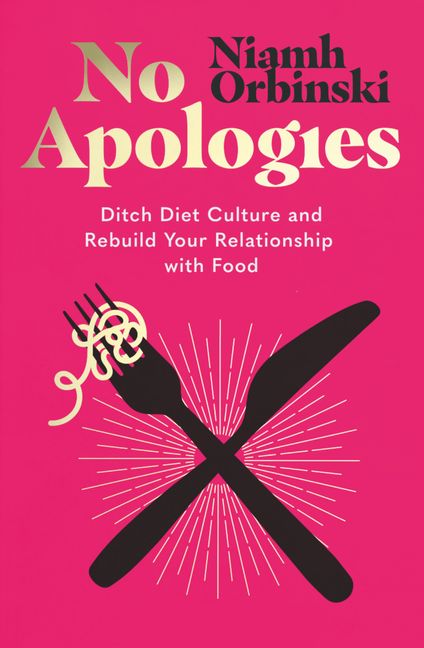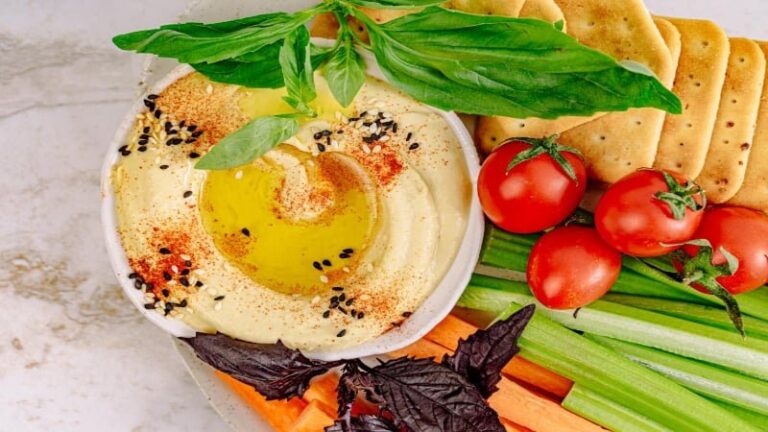Ditching Diet Culture: Cultivating a Healthy Relationship with Food
The year was 1998, and the pervasive whisper of "low-fat, no-fat" was a roaring chorus. My mother, a vibrant woman who always possessed a healthy appetite, meticulously tracked her points, meticulously weighed her food, and meticulously cataloged her "good" and "bad" days. She wasn’t alone. Friends, colleagues, celebrities – everyone seemed to be on a diet, perpetually striving for a smaller version of themselves, convinced that happiness, success, and self-worth resided exclusively within a particular dress size or a number on a scale.
This wasn’t just a personal observation; it was the suffocating embrace of diet culture, a phenomenon far more insidious and widespread than any single eating plan. It’s a system of beliefs that worships thinness, equates it to health and moral virtue, and demonizes certain foods while elevating others. It promises quick fixes, delivers only temporary results, and leaves a trail of broken self-esteem and disordered eating in its wake. And for decades, many of us, myself included, were unwitting, and often willing, participants in its grand, destructive illusion.
The story I want to tell isn’t one of a magical cure, but of a gradual, often arduous, awakening. It’s the story of shedding the shackles of diet culture, not by finding a better diet, but by abandoning the very concept of dieting altogether. It’s about discovering that true health isn’t about restriction and control, but about liberation, compassion, and a profound re-connection with our own bodies and their innate wisdom. It’s a journey from external rules to internal guidance, a path paved with self-acceptance and a radical redefinition of what it means to be well.
The Siren Song and the Silent Prison: Life Under Diet Culture
For years, my own relationship with food was a turbulent ocean, tossed by the prevailing winds of diet culture. I remember the rigid food rules, the mental gymnastics of calculating calories, the shame after a perceived "cheat meal," the endless cycle of restriction followed by inevitable overeating, only to dive back into another diet, convinced this time it would work. This wasn’t just about weight; it was about a relentless pursuit of control, an attempt to sculpt myself into the "ideal" that society constantly presented.
The insidious nature of diet culture lies in its omnipresence. It’s in the magazine covers screaming "Lose 10 Pounds in 10 Days!" It’s in the well-meaning comments from family members about "watching what you eat." It’s in the fitness influencers promoting "clean eating" and "detoxes." It infiltrates our language, our social interactions, and our deepest sense of self-worth. We learn to categorize foods as "good" or "bad," to view our bodies as projects needing constant improvement, and to judge ourselves and others based on appearance.
This constant vigilance and self-surveillance creates a silent prison. Food, which should be a source of nourishment, pleasure, and social connection, becomes an enemy to be conquered, a source of anxiety and guilt. Our natural hunger and fullness cues, gifts from our biological heritage, are silenced by external mandates. We eat not because we’re hungry, but because the clock says so, or because a diet plan dictates a certain portion size. We stop when the allotted amount is gone, not when we’re satisfied. This disconnect from our internal signals is perhaps the most damaging legacy of diet culture. It teaches us to distrust our own bodies, creating a fertile ground for disordered eating patterns, body dissatisfaction, and a pervasive sense of inadequacy.
The scientific community has increasingly affirmed what many have experienced firsthand: diets don’t work in the long run. Study after study shows that the vast majority of people who lose weight through dieting regain it, and often more, within a few years. This isn’t a failure of willpower; it’s a failure of the diet paradigm itself. Our bodies are remarkably adaptable; when faced with restriction, they respond by slowing metabolism, increasing hunger hormones, and making it incredibly difficult to maintain a caloric deficit. This biological reality, coupled with the psychological deprivation of denying oneself pleasure, creates an almost inescapable cycle of failure and self-blame.
The emotional toll is profound. Anxiety around food, obsessive thoughts about body image, feelings of shame and guilt, social isolation due to food fears, and a constant battle against one’s own physiology become the norm. The pursuit of thinness, promised as the gateway to happiness, often leads to exactly the opposite: a life consumed by food anxiety and body dissatisfaction, where genuine joy and connection are overshadowed by a relentless, unwinnable war against oneself.
The Cracks in the Facade: Seeking an Alternative
My personal breaking point, like many others, wasn’t a sudden epiphany but a slow, dawning realization that this path was unsustainable. The exhaustion of the cycle, the mental anguish, the sheer boredom of constantly thinking about food and my body, eventually outweighed the fleeting sense of control or the momentary validation of a smaller size. The promises of diet culture felt hollow, the rewards ephemeral.
It began with a quiet questioning: Is this all there is? Is this truly healthy? The answer, resounding and clear, was no. True health, I intuitively knew, couldn’t be achieved through self-punishment and perpetual deprivation. It had to involve peace, joy, and a sense of wholeness.
This moment of questioning opened the door to alternative perspectives – whispers at first, then a growing chorus of voices challenging the very foundations of diet culture. I stumbled upon concepts like Intuitive Eating and Health At Every Size (HAES). These weren’t diets; they were radical frameworks for reclaiming autonomy, fostering self-compassion, and redefining health outside of weight.
Intuitive Eating, pioneered by Evelyn Tribole and Elyse Resch, presented a revolutionary idea: trust your body. It proposed that humans are born with an innate ability to regulate their eating, and that this ability can be re-learned by rejecting diet mentality, honoring hunger, feeling fullness, making peace with food, discovering the satisfaction factor, feeling your fullness, coping with emotions with kindness, respecting your body, movement that feels good, and gentle nutrition.
HAES, a social justice movement, went even further, asserting that health is achievable at any size, and that focusing on weight as the primary indicator of health is not only inaccurate but also harmful, leading to weight stigma and discrimination. It advocates for respecting body diversity, challenging scientific and cultural assumptions, promoting respectful care, and supporting policies that improve health access, independent of weight.
These ideas felt both liberating and terrifying. Liberating because they offered an escape from the endless cycle; terrifying because they asked me to surrender the illusion of control that diet culture had offered. It meant trusting my body, which I had been taught for years to distrust. It meant allowing myself to eat foods I had long demonized. It felt like stepping off a cliff, but the promise of freedom on the other side was too compelling to ignore.
Reclaiming Our Relationship: The Pillars of Peace with Food
The journey of ditching diet culture and cultivating a healthy relationship with food is not a destination but an ongoing process, a dance between intention and practice. It’s about dismantling deeply ingrained beliefs and rebuilding a foundation of self-trust and compassion. Here are the core pillars that emerged from this transformative process:
1. Reject the Diet Mentality: Dismantling the Illusion
The first, and perhaps most challenging, step is to consciously and deliberately reject the diet mentality. This means throwing out the diet books, unfollowing "fitspiration" accounts that promote restrictive eating, and challenging every thought that whispers "you shouldn’t eat that" or "you must eat this." It’s about recognizing that diet culture is a con, a perpetual cycle designed to keep us feeling inadequate and perpetually seeking a solution that doesn’t exist.
This phase is often marked by discomfort. We’ve been conditioned for so long to seek external rules that the absence of them can feel like chaos. There’s a fear of "losing control," of "eating everything in sight." But this fear is a direct product of diet culture itself, which thrives on scarcity and restriction. When we finally allow ourselves unconditional permission to eat, the novelty of "forbidden" foods often wears off, and our bodies begin to gravitate towards balance naturally.
2. Honor Your Hunger: Reconnecting with Primal Wisdom
Our bodies are equipped with an incredible internal regulatory system designed to tell us when, what, and how much to eat. Diet culture systematically overrides this system. Honoring hunger means learning to recognize the subtle cues of physical hunger – a gentle rumble, a slight dip in energy, a feeling of emptiness – and responding to them promptly and adequately. It means eating before hunger becomes ravenous, which often leads to overeating.
This isn’t about eating at the first pang; it’s about checking in, asking, "Am I truly hungry?" and then respecting that answer. For years, I ignored my body’s pleas, pushing through hunger, convinced I was being "strong." Re-learning to listen felt like learning a new language. It required patience, mindfulness, and a willingness to sit with discomfort initially, especially if decades of dieting had dulled my body’s signals. It’s a fundamental act of self-care and trust.
3. Feel Your Fullness: Trusting Your Body’s "Stop" Signal
Just as important as honoring hunger is feeling and respecting fullness. Diet culture teaches us to eat according to portions, or to clean our plate, regardless of how our body feels. Intuitive Eating encourages us to slow down, pay attention to the taste and texture of our food, and notice the subtle shifts in our body as we eat.
This means asking ourselves throughout a meal, "How am I feeling? Am I still hungry? Am I comfortably full? Or am I starting to feel uncomfortably stuffed?" It’s about eating to the point of satisfaction, not engorgement. This practice can be challenging, especially in social settings or with highly palatable foods. It requires putting down the fork, pausing, and giving our bodies a chance to register what we’ve eaten. It’s a practice of mindfulness and respect for our physical sensations.
4. Make Peace with Food: No More "Good" or "Bad" Labels
One of the most liberating steps is to dismantle the moral hierarchy we’ve imposed on food. Food is food. There are no "good" foods that make us virtuous and "bad" foods that make us sinful. This black-and-white thinking is a hallmark of diet culture and a primary driver of guilt and shame.
Making peace with food means giving yourself unconditional permission to eat all foods. This doesn’t mean eating only "junk food" forever; paradoxically, when all foods are allowed, the intense craving for previously "forbidden" foods often diminishes. The "forbidden fruit" effect is powerful. When something is off-limits, it becomes intensely desirable. When it’s always available, the urgency fades, and we can make choices based on taste, satisfaction, and how foods make our bodies feel, rather than on deprivation. This allows for genuine craving for a wide variety of foods, including nutrient-dense options, to emerge naturally.
5. Discover the Satisfaction Factor: Eating for Joy and Pleasure
Food is meant to be enjoyed. Diet culture strips away the pleasure of eating, turning it into a purely utilitarian or punitive act. The satisfaction factor means choosing foods that you genuinely enjoy, in an environment that is pleasant, and taking the time to savor them.
It’s about the entire eating experience: the taste, the aroma, the texture, the company, the ambiance. When we eat satisfying meals, we are less likely to seek out more food later to fill an emotional or sensory void. This concept was a revelation for me. For years, I had eaten joylessly, often standing over the sink, wolfing down "healthy" but unsatisfying meals. Learning to sit down, plate my food beautifully, and truly taste each bite transformed my meals from chores into moments of genuine pleasure and nourishment.
6. Cope with Emotions with Kindness: Food as a Comfort, Not a Cure
We all eat for reasons beyond physical hunger – stress, boredom, sadness, joy. This is a normal human experience. Diet culture demonizes emotional eating, leading to guilt and shame. A healthy relationship with food acknowledges emotional eating without judgment.
The goal isn’t to eliminate emotional eating entirely, but to understand its roots and develop a wider repertoire of coping mechanisms. It’s about pausing before reaching for food and asking, "What am I truly feeling? What do I truly need right now?" Sometimes, the answer might still be food, and that’s okay. Other times, it might be a walk, a conversation with a friend, a warm bath, or a creative outlet. The key is to approach these moments with self-compassion, curiosity, and a desire to meet our needs in the most supportive way possible, rather than using food as the only default coping strategy.
7. Respect Your Body: Embracing Body Diversity and Self-Acceptance
This pillar, deeply intertwined with HAES principles, is perhaps the most radical departure from diet culture. It means accepting and respecting your body as it is right now, not as you hope it will be after another diet. It means understanding that bodies come in all shapes and sizes, and that every body deserves respect and care.
This is a profound journey away from body hatred and towards body neutrality, and eventually, for some, body appreciation. It involves challenging internalized fatphobia, recognizing the harmful impact of weight stigma, and advocating for social justice in health. For me, it meant unfollowing social media accounts that triggered comparison and finding diverse representations of bodies that celebrated strength, joy, and authenticity. It meant shifting my focus from aesthetics to function, appreciating what my body does for me rather than how it looks.
8. Movement that Feels Good: Joyful Movement Over Punitive Exercise
Diet culture often frames exercise as a means to an end – a way to burn calories, punish perceived overeating, or achieve a certain body shape. This turns movement into a chore, something to be endured rather than enjoyed. Joyful movement means finding ways to move your body that genuinely feel good, energizing, and fun.
It’s about connecting with the sensation of movement, whether it’s dancing, walking in nature, practicing yoga, or playing a sport. It’s about respecting your body’s energy levels and needs, resting when necessary, and moving in ways that bring you pleasure. This shift transformed my relationship with physical activity from one of dread and obligation to one of playful exploration and self-care.
9. Gentle Nutrition: Holistic Health, Not Obsessive Control
Once the other pillars are in place and a healthy relationship with food has begun to solidify, gentle nutrition can enter the picture. This isn’t about rules or restriction; it’s about making food choices that support your overall well-being, based on what feels good to your body, without sacrificing pleasure or creating anxiety.
It means considering how different foods make you feel, your energy levels, your digestion, and your mood. It’s about adding nourishing foods rather than subtracting "bad" ones. It acknowledges that there’s no single "perfect" way to eat, and that flexibility and variety are key. It’s an intuitive understanding that develops over time, as you learn to trust your body’s signals and respect its needs for both nutrient density and pure enjoyment.
The Ongoing Journey: Freedom, Not Perfection
Ditching diet culture is not a linear path. There will be days when the old whispers resurface, when a social media post triggers comparison, or when old habits threaten to creep back in. This is normal. The key is to approach these moments with self-compassion, rather than self-judgment. It’s about acknowledging the struggle, offering yourself kindness, and gently redirecting back to the principles of intuitive eating and body respect.
The transformation is profound. The mental space once consumed by food rules, calorie counting, and body obsession is freed up for creativity, relationships, passions, and purpose. The anxiety around food diminishes, replaced by a quiet confidence in one’s own body. Meals become moments of enjoyment and nourishment, rather than battles to be won or lost.
This journey is ultimately about reclaiming our lives from the clutches of an industry that profits from our insecurity. It’s about understanding that our worth is inherent, not contingent on our size or shape. It’s about cultivating resilience, self-trust, and a profound respect for the incredible vessels that carry us through life.
My mother, now in her 70s, still occasionally talks about her weight, a testament to how deeply diet culture can embed itself. But she also, increasingly, talks about savoring a good meal, enjoying a walk with friends, and finding joy in her grandchildren. The whispers of diet culture are still there, but they are no longer the dominant narrative.
For those of us who have walked this path, or are just beginning to step onto it, the message is clear: You are enough, just as you are. Your body is wise. Trust it. The path to a truly healthy relationship with food isn’t found in a new diet, but in a radical act of self-love and liberation. It’s a journey home to yourself, where peace with food is not a distant dream, but a lived reality, allowing us to nourish not just our bodies, but our entire, vibrant lives.







